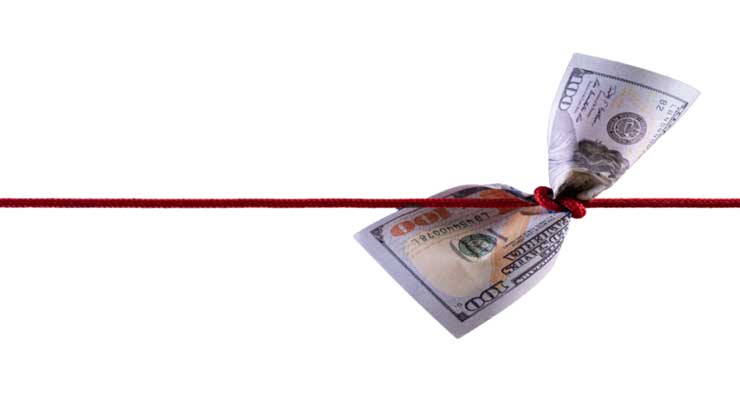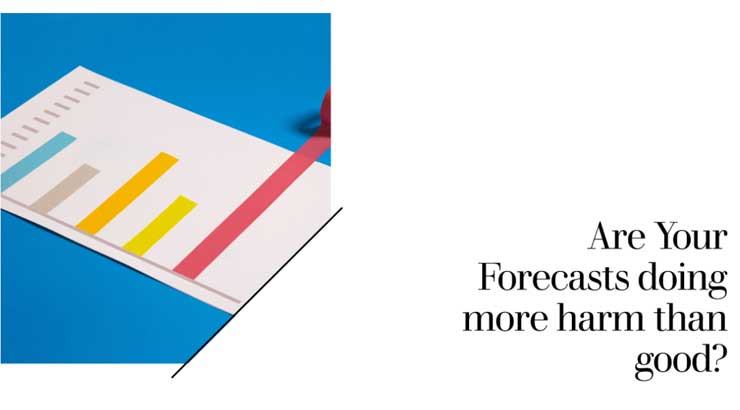Practices – Plan
Demand Control
By implementing demand control, we help clients effectively manage and respond to customer demand patterns. This involves adjusting inventory levels and production schedules based on real-time demand insights, which ensures that products are available when needed. This practice enhances on-time delivery by aligning supply with actual demand and reducing delays caused by stockouts or overstock.
Forecast Value Added Measurement
Our approach to forecast value added focuses on enhancing the usefulness and accuracy of demand forecasts. By applying advanced analytical techniques and incorporating relevant market insights, we improve the precision of your forecasts. This practice ensures that inventory levels are optimized to meet actual demand, leading to reduced excess stock and lower holding costs. Improved forecast value directly contributes to better cash flow by minimizing inventory obsolescence and improving financial efficiency.
Take Control of your Supply Chain with this Powerful Practice
 By implementing demand control, we help clients effectively manage and respond to customer demand patterns. This involves adjusting inventory levels and production schedules based on real-time demand insights, which ensures that products are available when needed. This practice enhances on-time delivery by aligning supply with actual demand and reducing delays caused by stockouts or overstock.
By implementing demand control, we help clients effectively manage and respond to customer demand patterns. This involves adjusting inventory levels and production schedules based on real-time demand insights, which ensures that products are available when needed. This practice enhances on-time delivery by aligning supply with actual demand and reducing delays caused by stockouts or overstock.
Read More…
 Take Control of your Supply Chain with this Powerful Practice
Take Control of your Supply Chain with this Powerful Practice
A Cautionary Tale about Forecast Inaccuracy
 I came into work one morning to learn that most of the senior management team had been fired. In the following few months, everything was different at the company where I had worked for five years. The most tangible change was that the company closed the plush corporate office where I had worked. They gave me a choice: relocate to the manufacturing site or adios. Given that I had a wife and three kids settled in a lovely small town on the water, with many good friends, there was no desirable choice. In the end, we reluctantly relocated from the San Francisco area to be close to the manufacturing site in Southern California.
I came into work one morning to learn that most of the senior management team had been fired. In the following few months, everything was different at the company where I had worked for five years. The most tangible change was that the company closed the plush corporate office where I had worked. They gave me a choice: relocate to the manufacturing site or adios. Given that I had a wife and three kids settled in a lovely small town on the water, with many good friends, there was no desirable choice. In the end, we reluctantly relocated from the San Francisco area to be close to the manufacturing site in Southern California.
Read More…
 A Cautionary Tale about Forecast Inaccuracy
A Cautionary Tale about Forecast Inaccuracy
Artificial Volatility Reduction
We implement artificial volatility reduction strategies to stabilize demand forecasting and inventory management. By smoothing out erratic demand patterns and minimizing artificial spikes, we enhance forecast accuracy and improve operational stability. This practice prepares clients for sustainable growth by ensuring that their supply chain can handle increased demand without disruptions, enabling more reliable scaling and expansion.
Mastering Forecast Accuracy: Conquer Artificial Volatility for Supply Chain Excellence
 This is an excerpt from my new book, Lean Forecasting Demystified. If you find this valuable, please click on this link to order on Amazon.
This is an excerpt from my new book, Lean Forecasting Demystified. If you find this valuable, please click on this link to order on Amazon.
In 2004, director James Cameron said “Hope is not a strategy” when addressing the NASA Administrator’s Symposium. He was referring to his exploration of the Titanic wreck to which he has made thirty-three dives. Suffice to say “hope” did not play a large part in his planning process. In fact, his engineering team spent seven years building the submersible capable of performing this feat.
Read More…
 Mastering Forecast Accuracy: Conquer Artificial Volatility for Supply Chain Excellence
Mastering Forecast Accuracy: Conquer Artificial Volatility for Supply Chain Excellence
Forecast Bias Reduction
We analyze forecast bias to detect and correct systematic errors in demand forecasts. By identifying and addressing biases that lead to over- or underestimations, we improve the accuracy of your forecasts. This reduction in forecast bias ensures that inventory levels are more closely aligned with actual demand, reducing excess inventory and minimizing carrying costs. As a result, clients experience improved cash flow through better inventory management and reduced financial strain from inaccurate forecasts.
Fix this 1 forecasting practice and improve your supply chain immediately and forever!

Challenge
Forecast Bias unnecessarily causes either excess inventory or shortages, depending upon in which direction the bias exists. This is the worst type of forecast inaccuracy because it is induced by management practices.
Bias is when the forecast is consistently over or under actual demand. The other type of forecast inaccuracy is random variation, in which actual demand fluctuates above or below the forecast each month. Random variation is natural and cannot be eliminated, but it can be reduced through process improvements.
Read More…
 Fix this 1 forecasting practice and improve your supply chain immediately and forever!
Fix this 1 forecasting practice and improve your supply chain immediately and forever!
Part 1: Unlock all that cash tied up in inventory
 During these challenging times, many organizations are experiencing cash flow pressures. For that reason, I have published a list of 50 practices that will quickly and sustainably reduce inventory levels. Quickly because they do not require investment in expensive technology. These tools focus on using your head, not your wallet. Sustainably because they are all about improving the “critical few” process gaps, not short term gimmicks, such as refusing supplier deliveries at quarter end.
During these challenging times, many organizations are experiencing cash flow pressures. For that reason, I have published a list of 50 practices that will quickly and sustainably reduce inventory levels. Quickly because they do not require investment in expensive technology. These tools focus on using your head, not your wallet. Sustainably because they are all about improving the “critical few” process gaps, not short term gimmicks, such as refusing supplier deliveries at quarter end.
Read More…
 Part 1: Unlock all that cash tied up in inventory
Part 1: Unlock all that cash tied up in inventory
Lean Forecasting
Our lean forecast process focuses on streamlining forecasting methods to eliminate waste and inefficiencies. By adopting lean principles, we reduce unnecessary steps and improve the accuracy and speed of forecasts. This streamlined process enables clients to respond more agilely to market changes and growth opportunities, ensuring that they are well-prepared to scale operations efficiently and effectively.
Forecast Override Reduction
We tackle forecast override reduction by minimizing instances where forecasts are overridden without valid reasons. By establishing clear protocols and enhancing forecast accuracy, we ensure that adjustments are made based on data-driven insights rather than intuition. This practice leads to more reliable forecasts and inventory levels, supporting growth readiness by creating a more predictable and manageable scaling process.
Part 3: Forecast Simplification - Keep It Simple Strategies (K.I.S.S) Challenge
 Challenge
Challenge
In many organizations, the task of creating a forecast has been made much more difficult than necessary. The sales team might be asked to provide monthly forecast updates for individual items for the next 12-24 months. This is a painful, time-consuming process, that takes the sales team away from revenue generation. In addition, attention is not paid to the critical few items that should be focused upon, thereby reducing forecast accuracy, which in turns will create excess inventory and product shortages, simultaneously.
Read More…
Part 3: Forecast Simplification – Keep It Simple Strategies (K.I.S.S)
What this Picture from Mars tells us about a Common Forecasting Mistake

On July 25, 1976, the Viking 1 orbiter took a photograph of the Martian surface that included a formation resembling a face-like structure.
The photo created quite a stir back on earth with rumors that the face was evidence of life on Mars and that NASA was covering it up. Since then, it was featured in radio shows, talk shows, tabloid papers, books, and websites. Personally, I tend to lean towards NASA’s explanation that this was an example of pareidolia, a psychological phenomenon where the human mind perceives familiar patterns, shapes, or meaningful images in random or ambiguous stimuli. Their caption below the photo read: “The huge rock formation in the center, which resembles a human head, is formed by shadows giving the illusion of eyes, nose and mou
Read More…
Forecast Value Added Measurement
Our approach to forecast value added focuses on enhancing the usefulness and accuracy of demand forecasts. By applying advanced analytical techniques and incorporating relevant market insights, we improve the precision of your forecasts. This practice ensures that inventory levels are optimized to meet actual demand, leading to reduced excess stock and lower holding costs. Improved forecast value directly contributes to better cash flow by minimizing inventory obsolescence and improving financial efficiency.
Forecasting Technique Optimization
We employ forecasting technique optimization to tailor forecasting methods specifically to demand volume and volatility. By analyzing historical data and demand patterns, we select and refine forecasting techniques that best match the variability and scale of demand. This targeted approach improves forecast accuracy and helps clients better manage inventory and resources. As a result, clients are better prepared for growth, with forecasts that accurately reflect their needs and reduce the risk of stockouts or excess inventory. This optimization ensures that businesses can scale efficiently and effectively, supporting sustainable expansion and operational agility.
Are your Forecasts Doing More Harm than Good?

Read More…
Are your Forecasts Doing More Harm than Good?
Choosing the Right Forecasting Strategy: Key Insights for Supply Chain Success
An excerpt from my book, Lean Forecasting Demystified, that is available on Amazon.
Everyone knows that increased forecast accuracy translates to improved supply chain performance. Yet, despite this knowledge, many organizations are not using the right forecasting strategy, or don’t know how to go about selecting it.
So then, how do we figure out what the best strategy is? The answer lies in two critical bits of information about the item’s demand: demand volatility and demand volume.
Read More…
 Choosing the Right Forecasting Strategy: Key Insights for Supply Chain Success
Choosing the Right Forecasting Strategy: Key Insights for Supply Chain Success
Sales and Operations Planning
We employ forecasting technique optimization to tailor forecasting methods specifically to demand volume and volatility. By analyzing historical data and demand patterns, we select and refine forecasting techniques that best match the variability and scale of demand. This targeted approach improves forecast accuracy and helps clients better manage inventory and resources. As a result, clients are better prepared for growth, with forecasts that accurately reflect their needs and reduce the risk of stockouts or excess inventory. This optimization ensures that businesses can scale efficiently and effectively, supporting sustainable expansion and operational agility.
An S&OP Roadmap from Under-Performing to Excellence

It takes time, so it is helpful to have a roadmap to help guide you to the finish line.
Read More…






